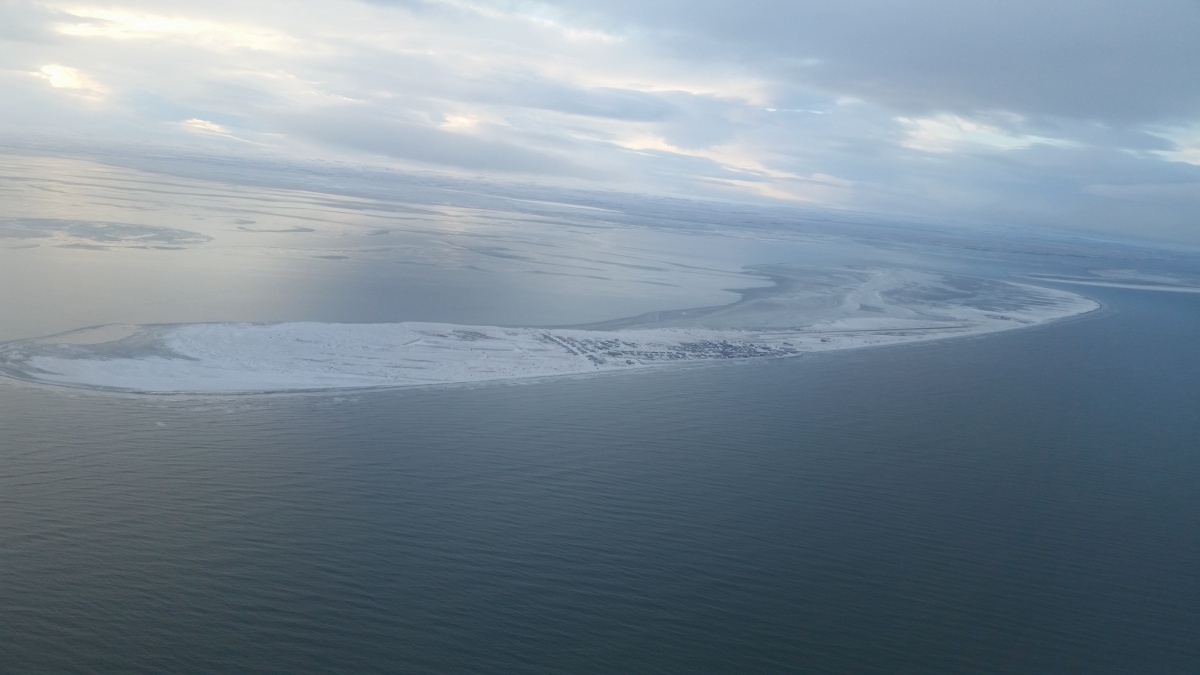In Alaska, the National Weather Service must change as rapidly as the climate
A changing climate and more interest in economic activity are “testing our ability to provide meaningful, actionable information,” the weather service said.

In 2012, Shell Oil began drilling exploratory oil and gas wells in the Chukchi Sea, off the northwest coast of Alaska.
The company poured billions of dollars into the project, but they soon encountered problems typical of working in one of the harshest environments on the planet; during a storm, for example, a drilling vessel in the Gulf of Alaska broke loose from its tow and ran aground near Kodiak.
In order to anticipate other problems and to plan its drilling, Shell asked the National Weather Service to predict environmental phenomena like sea ice formation.
“They were asking us the sorts of questions we had never been asked before — they were wanting to know, in January, when the ice was going to go out,” says Carven Scott, director of Alaska’s NWS. “Nobody had ever asked us what sea ice was going to do four to five months in advance.”
Scott’s team had trouble finding good answers.
“There are a lot of scientific questions that we are not prepared,” he says, “to really answer.”
It was a learning experience for the agency. When Shell returned in 2015, NWS was much better prepared to answer such questions.
But increasingly complex questions about the weather and conditions in the Arctic are only becoming more common. And it’s important for agencies like NWS to help companies assess safety before disaster strikes.
“Where do I build infrastructure? When can I take a resupply barge to Red Dog Mine? When can I get drilling equipment up to Prudhoe Bay? When is the last barge I can get out of Prudhoe Bay? When can I start taking barges along the Siberian coast?”
These are all questions Scott has fielded — and, he says, they are “testing our ability to provide meaningful, actionable information.”
Only three decades ago, when Scott moved to Alaska, predicting the weather based on models was simple, he says. Now, the region is changing so quickly, it’s difficult for the models to keep up.
“Just in my short time in Alaska, we have seen a transformation,” he says. “We see the climate changing in very real sorts of ways.”
In response, the NWS is also evolving. In the past, the 11 weather service offices sprinkled throughout Alaska would launch weather balloons twice daily to collect data. Now they are looking beyond these traditional meteorological tasks to find new ways to predict what the future will bring.
“Even though we’re doing weather-related things right now,” he says, “what is going to happen to the crab stocks in the next 20 years?”
As the environment changes rapidly, it will have cascading effects — not just on weather, but on industry, security, infrastructure and more. Rapidly evolving storm conditions threaten the safety of mariners; algal blooms affect the health of crustaceans and kelp; rivers swell from ice melt and frequently flood communities.
Predicting conditions in the Arctic goes far beyond weather forecasting and climate information. And the true challenge, he says, will be “ensuring that our sound science is tied to policymaking” — turning the massive amounts of data from a rapidly changing environment into better decisions and policies.
“If we’re going to do this job, if we’re going to transform, we need to do it correctly,” Scott says. “We can’t do it as a weather entity alone.”